Ознакомьтесь с правилами эксплуатации вашего автомобиля Toyota, изучив электронную версию руководства.
На данной странице представлены следующие типы руководств:
- Общее руководство для владельца
- Руководство по мультимедиа и навигации
- Руководство по вождению в условиях бездорожья

Corolla
Руководство для владельца
Руководство по эксплуатации навигационной и мультимедийной системы

Camry
Руководство для владельца
Руководство по эксплуатации навигационной и мультимедийной системы
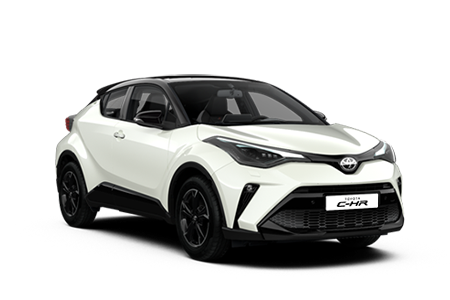
C-HR
Руководство для владельца
Руководство по эксплуатации навигационной и мультимедийной системы

RAV4
Руководство для владельца
Руководство по эксплуатации навигационной и мультимедийной системы

Highlander
Руководство для владельца
Руководство по эксплуатации навигационной и мультимедийной системы
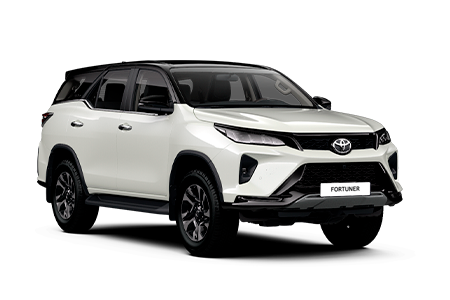
Fortuner
Руководство для владельца
Руководство по эксплуатации навигационной и мультимедийной системы

Land Cruiser Prado
Руководство для владельца
Руководство по эксплуатации навигационной и мультимедийной системы
Руководство по вождению в условиях бездорожья
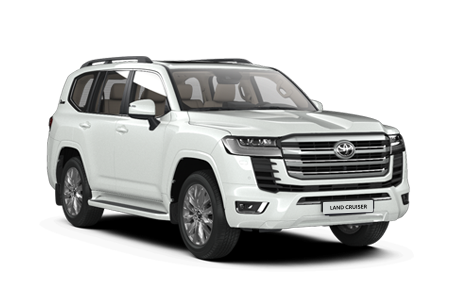
Land Cruiser 300
Руководство для владельца
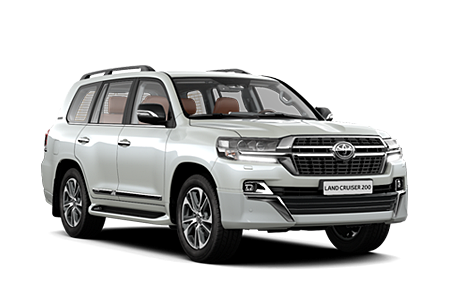
Руководство для владельца
Руководство по эксплуатации навигационной и мультимедийной системы
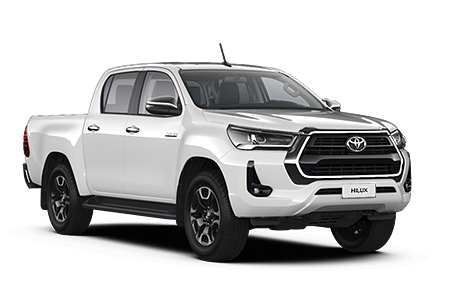
Hilux
Руководство для владельца
Руководство по эксплуатации навигационной и мультимедийной системы

Alphard
Руководство для владельца
Руководство по эксплуатации навигационной и мультимедийной системы
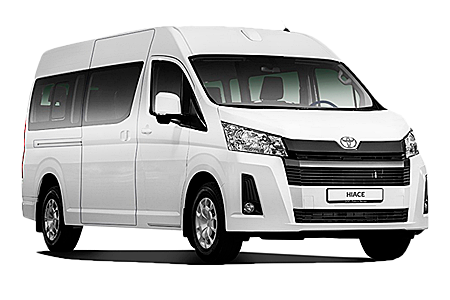
Hiace
Руководство для владельца
Руководство по эксплуатации навигационной и мультимедийной системы
Смотрите также:
- Форум
- Общий форум
- Руководства, инструкции и чертежи
- Руководство по эксплуатации V70 (2018-2019…)
-
12.10.2012 23:02
#1
Братство Стали
Array
Руководство по эксплуатации V70 (2018-2019…)
-
4 пользователя(ей) сказали cпасибо:
cobalt (22.06.2020), Damo UFA (22.11.2019), Дед Эндрю (23.03.2019), Лик (05.02.2020)
Текущее время: 01:29. Часовой пояс GMT +3.
© ToyotaCamry.ru. При перепечатке материалов помните, активная ссылка на toyotacamry.ru обязательна, от якудзы не скрыться.
Powered by vBulletin™. Copyright © vBulletin Solutions, Inc.

Corolla
Руководство для владельца
Руководство по эксплуатации навигационной и мультимедийной системы

Camry
Руководство для владельца
Руководство по эксплуатации навигационной и мультимедийной системы

C-HR
Руководство для владельца
Руководство по эксплуатации навигационной и мультимедийной системы

RAV4
Руководство для владельца
Руководство по эксплуатации навигационной и мультимедийной системы

Highlander
Руководство для владельца
Руководство по эксплуатации навигационной и мультимедийной системы

Fortuner
Руководство для владельца
Руководство по эксплуатации навигационной и мультимедийной системы

Land Cruiser Prado
Руководство для владельца
Руководство по эксплуатации навигационной и мультимедийной системы
Руководство по вождению в условиях бездорожья

Land Cruiser 300
Руководство для владельца

Руководство для владельца
Руководство по эксплуатации навигационной и мультимедийной системы

Hilux
Руководство для владельца
Руководство по эксплуатации навигационной и мультимедийной системы

Alphard
Руководство для владельца
Руководство по эксплуатации навигационной и мультимедийной системы

Hiace
Руководство для владельца
Руководство по эксплуатации навигационной и мультимедийной системы
Смотрите также:
-
Contents
-
Table of Contents
-
Bookmarks
Quick Links
Pictorial index
For safety
1
and security
Instrument
2
cluster
Operation of
each
3
component
Driving
4
Interior features
5
Maintenance
6
and care
When trouble
7
arises
Vehicle
8
specifications
For owners
9
Index
Search by illustration
Make sure to read through them
How to read the gauges and meters, the variety of
warning lights and indicators, etc.
Opening and closing the doors and windows,
adjustment before driving, etc.
Operations and advice which are necessary for
driving
Usage of the interior features, etc.
Caring for your vehicle and maintenance
procedures
What to do in case of malfunction or emergency
Vehicle specifications, customizable features, etc.
Reporting safety defects for U.S. owners, and seat
belt and SRS airbag instructions for Canadian
owners
Search by symptom
Search alphabetically
Summary of Contents for Toyota Camry Hybrid 2018
Всем салют! Для удобства и быстрого доступа, создаю себе небольшой каталог электронных версий. Может и кому-то из вас пригодиться.
Электронная версия мануала — то что нашел в приложении MyT Toyota.
Руководство для владельца Toyota Camry XV70.
Ссылка на Англоязычную версию Руководство пользователя — любезно предоставленную Temeke
Руководство по эксплуатации навигационной и мультимедийной системы на платформе Android Toyota Camry XV70.
Руководство по ремонту и обслуживанию Camry xv70
Ремонт кузова и геометрия — взято у OKGV
Ссылка на инструкции для других моделей Toyota
Полный размер
Общие сведения.
Габаритные размеры.
Для всех машин Toyota можно посмотреть мануал ЗДЕСЬ.
Форум Toyota Camry — ЗДЕСЬ.
- Manuals
- Brands
- Toyota Manuals
- Automobile
- Camry 2018
Manuals and User Guides for Toyota Camry 2018. We have 3 Toyota Camry 2018 manuals available for free PDF download: Owner’s Manual, Quick Reference Manual
Toyota Camry 2018 Owner’s Manual (616 pages)
Brand: Toyota
|
Category: Automobile
|
Size: 19 MB
Table of Contents
-
Pictorial Index
3
-
Table of Contents
4
-
Accessories, Spare Parts and Modification of Your Toyota
8
-
For Your Information
8
-
Installation of a Mobile Two-Way Radio System
8
-
Data Transmission
9
-
Data Usage
9
-
Vehicle Data Recordings
9
-
Disclosure of the EDR Data
10
-
Event Data Recorder
10
-
Perchlorate Material
11
-
Scrapping of Your Toyota
11
-
-
Reading this Manual
12
-
How to Search
13
-
Exterior
14
-
Pictorial Index
14
-
Front Turn Signal Lights
15
-
Instrument Panel
16
-
Switches
18
-
Interior
21
-
For Safety and Security
23
-
Before Driving
24
-
Floor Mat
24
-
-
1-1. for Safe Use
24
-
For Safe Driving
26
-
Correct Driving Posture
26
-
Correct Use of the Seat Belts
26
-
Adjusting the Mirrors
27
-
-
Seat Belts
28
-
Fastening and Releasing the Seat Belt
28
-
Adjusting the Seat Belt Shoulder Anchor Height (Front Seats)
29
-
Seat Belt Pretensioners (Front and Outboard Rear Seats)
29
-
Emergency Locking Retractor (ELR)
30
-
Automatic Locking Retractor (ALR)
30
-
Child Seat Belt Usage
30
-
Replacing the Belt after the Pretensioner Has Been Activated
30
-
Wearing a Seat Belt
31
-
Pregnant Women
31
-
-
SRS Airbags
34
-
SRS Front Airbags
34
-
SRS Side and Curtain Shield Airbags
35
-
SRS Airbag System Components
36
-
SRS Airbag Precautions
37
-
If the SRS Airbags Deploy (Inflate)
43
-
SRS Airbag Deployment Conditions (SRS Front Airbags)
43
-
SRS Airbag Deployment Conditions (SRS Side and Curtain Shield Airbags)
43
-
Types of Collisions that May Not Deploy the SRS Airbags
45
-
When to Contact Your Toyota Dealer
46
-
-
Front Passenger Occupant Classification System
47
-
Exhaust Gas Precautions
52
-
Important Points While Driving
52
-
When Parking
52
-
Exhaust Pipe
52
-
-
Riding with Children
53
-
-
Child Safety
53
-
Child Restraint Systems
54
-
Points to Remember
54
-
Types of Child Restraint System Installation Methods
56
-
When Using a Child Restraint System
58
-
Child Restraint System Fixed with a Seat Belt
61
-
Installing Child Restraint System Using a Seat Belt
61
-
Rear-Facing — Infant Seat/Convertible Seat
61
-
Forward-Facing — Convertible Seat
62
-
Booster Seat
64
-
Booster Type
64
-
High Back Type
64
-
Removing a Child Restraint System Installed with a Seat Belt
65
-
When Installing a Child Restraint System
66
-
When Installing a Booster Seat
66
-
Do Not Use a Seat Belt Extender
66
-
When Installing in the Rear Outboard Seats
67
-
-
Fixed with a Child Restraint LATCH Anchor
67
-
With Flexible Lower Attachments
68
-
With Rigid Lower Attachments
68
-
When Installing in the Rear Center Seat
69
-
Laws and Regulations Pertaining to Anchors
69
-
-
Using an Anchor Bracket (for Top Tether Strap)
70
-
Fixing the Top Tether Strap to the Anchor Bracket
70
-
Conditions that May Cause the System to Malfunction
73
-
Engine Immobilizer System
73
-
System Maintenance
73
-
Alarm
76
-
Setting the Alarm System
76
-
Deactivating or Stopping the Alarm
77
-
Items to Check before Locking the Vehicle
77
-
Alarm-Operated Door Lock
78
-
Triggering of the Alarm
78
-
-
-
2 Instrument Cluster
79
-
4.2-Inch Display
80
-
7-Inch Display
80
-
Warning Lights and Indicators
80
-
Warning Lights
81
-
Indicators
83
-
Gauges and Meters
86
-
Instrument Panel Light Control
87
-
Brightness of the Meters (Day Mode and Night Mode)
88
-
Outside Temperature Display
88
-
The Meters and Display Illuminate When
88
-
-
Multi-Information Display (4.2-Inch Display)
89
-
Summary of Functions
89
-
Using the Content Display Area
90
-
Using the Multi-Information Display
90
-
Using the Odometer/Trip Meter
90
-
Menu Icons
91
-
Drive Information
92
-
Total (after Reset)
92
-
Trip (after Start)
92
-
Speedometer
93
-
Tank (after Refuel)
93
-
Changing Settings
94
-
Setting Items
94
-
Settings Display
94
-
BSM (Blind Spot Monitor) Function
95
-
PCS (Pre-Collision System)
95
-
RCTA (Rear Cross Traffic Alert) Function
95
-
Vehicle Settings
96
-
Meter Settings
97
-
Odometer
98
-
Suggestion Function
98
-
Suggestion to Turn off the Headlights
98
-
Trip Meter A/Trip Meter B
98
-
Eco Driving Indicator
99
-
Liquid Crystal Display
99
-
Suspension of the Settings Display
99
-
Tire Pressure
99
-
-
Multi-Information Display (7-Inch Display)
101
-
Eco Indicator
105
-
Meter Settings
111
-
-
Head-Up Display
115
-
Changing the Head-Up Display Settings
116
-
Display Content
116
-
Enabling/Disabling the Head-Up Display
116
-
Using the Head-Up Display
116
-
Driving Assist System Status Display
117
-
Navigation System-Linked Display Area
117
-
Route Guidance to Destination
117
-
Street Name
117
-
Tachometer
118
-
Audio System Operation Status
119
-
Hands-Free System Status
119
-
Information Display Area
119
-
Warning/Message
119
-
Display Brightness
120
-
Enabling/Disabling of the Head-Up Display
120
-
Street Name Display (Vehicles with a Navigation System)
120
-
-
Fuel Consumption Information
122
-
Trip Information
122
-
Entune Premium Audio
123
-
History
124
-
Cruising Range
125
-
Resetting the Data
125
-
Updating the Past Record Data
125
-
-
-
3 Operation of each Component
127
-
-
3-1. Key Information
128
-
The Keys
128
-
Wireless Remote Control
129
-
Using the Key (Vehicles Without a Smart Key System)
130
-
Using the Mechanical Key (Vehicles with a Smart Key System)
130
-
Panic Mode
131
-
When Required to Leave the Vehicle’s Key with a Parking Attendant
131
-
Conditions Affecting Operation
132
-
If You Lose Your Keys
132
-
When Riding in an Aircraft
132
-
Confirmation of the Registered Key Number
133
-
If a Wrong Key Is Used
133
-
Key Battery Depletion
133
-
Doors
137
-
Smart Key System
137
-
Unlocking and Locking the Doors from the Outside
137
-
Key
139
-
Door Lock Buzzer
140
-
Operation Signals
140
-
Security Feature
140
-
Door Lock Switches
141
-
Inside Lock Buttons
141
-
Locking the Front Doors from the Outside Without a Key
141
-
Unlocking and Locking the Doors from the Inside
141
-
Automatic Door Locking and Unlocking Systems
142
-
Rear Door Child-Protector Lock
142
-
Switching the Door Unlock Function (Vehicles with a Smart Key System)
143
-
Impact Detection Door Lock Release System
144
-
Open Door Warning Buzzer
144
-
Opening the Trunk from Inside the Vehicle
146
-
Opening the Trunk from Outside the Vehicle
146
-
-
Trunk
146
-
Internal Trunk Release Lever
148
-
Open Trunk Warning Buzzer
148
-
Trunk Light
148
-
Antenna Location
151
-
-
Smart Key System
151
-
Alarms and Warning Indicators
152
-
Effective Range
152
-
Battery-Saving Function
153
-
Electronic Key Battery-Saving Function
153
-
Note for the Entry Function
154
-
-
Front Seats
160
-
-
3-3. Adjusting the Seats
160
-
Folding down the Rear Seatbacks
162
-
Rear Seats (Folding Type)
162
-
Adjustable Type
164
-
Head Restraints
164
-
Integrated Type
164
-
Removing the Head Restraints
164
-
Installing the Head Restraints
165
-
Horn
166
-
-
Steering Wheel
166
-
Wheel and Mirrors Steering Wheel
166
-
Adjusting the Height of Rear View Mirror
168
-
Anti-Glare Function
168
-
-
Inside Rear View Mirror
168
-
Manual Anti-Glare Inside Rear View Mirror
168
-
Auto Anti-Glare Inside Rear View Mirror
169
-
To Prevent Sensor Error
169
-
Folding the Mirrors
170
-
-
Outside Rear View Mirrors
170
-
Mirror Angle Can be Adjusted When
171
-
When the Mirrors Are Fogged up
171
-
Opening and Closing Procedures
172
-
-
Power Windows
172
-
The Power Windows Can be Operated When
172
-
Window Lock Switch
172
-
Catch Protection Function
173
-
Jam Protection Function
173
-
Operating the Power Windows after Turning the Engine off
173
-
When the Window Cannot be Opened or Closed
173
-
Door Lock Linked Window Operation
174
-
Power Windows Open Warning Buzzer
174
-
-
Moon Roof
176
-
Opening and Closing
176
-
Tilting up and down
176
-
Door Lock Linked Moon Roof Operation
177
-
Operating the Moon Roof after Turning the Engine off
177
-
Sunshade
177
-
The Moon Roof Can be Operated When
177
-
If the Moon Roof Closes but then Re-Opens Slightly
178
-
If the Moon Roof Tilts down but then Tilts Back up
178
-
Moon Roof Open Warning Buzzer
178
-
When the Moon Roof Does Not Close Normally
178
-
Opening and Closing the Electronic Sunshade
180
-
-
Panoramic Moon Roof
180
-
Tilting the Panoramic Moon Roof up and down
180
-
Opening and Closing the Panoramic Moon Roof
181
-
Operating the Panoramic Moon Roof after Turning the Engine off
181
-
The Panoramic Moon Roof Can be Operated When
181
-
Closing both the Panoramic Moon Roof and Electronic Sunshade
182
-
Panoramic Moon Roof Open Warning Buzzer
182
-
-
-
4-1. before Driving
185
-
Driving the Vehicle
186
-
Stopping
186
-
Parking the Vehicle
186
-
Starting off on a Steep Uphill
186
-
When Starting off on a Uphill
187
-
Driving in the Rain
187
-
Engine Speed While Driving
187
-
Restraining the Engine Output (Brake Override System)
187
-
Drum-In-Disc Type Parking Brake System
188
-
Operating Your Vehicle in a Foreign Country
188
-
-
Cargo and Luggage
194
-
Capacity and Distribution
194
-
Calculation Formula for Your Vehicle
195
-
-
Vehicle Load Limits
197
-
Total Load Capacity (Vehicle Capacity Weight)
197
-
Seating Capacity
197
-
Cargo Capacity
197
-
-
Trailer Towing
198
-
Dinghy Towing
199
-
Starting the Engine
200
-
Changing the Engine Switch Positions
200
-
Turning the Key from “ACC” to “LOCK”
200
-
-
Engine (Ignition) Switch (Vehicles Without a
200
-
Smart Key System)
200
-
If “Not Ready to Drive” Is Displayed on Multi-Information Display
201
-
If the Engine Does Not Start
201
-
When the Steering Lock Cannot be Released
201
-
Key Reminder Function
201
-
-
-
Engine (Ignition) Switch (Vehicles with a Smart Key System)
202
-
Stopping the Engine
202
-
Changing Engine Switch Modes
203
-
Auto Power off Function
204
-
Steering Lock
204
-
Steering Lock Motor Overheating Prevention
204
-
Operation of the Engine Switch
205
-
-
Automatic Transmission
207
-
Shifting the Shift Lever
207
-
Shift Position Purpose
208
-
Changing Shift Ranges in S Mode
208
-
Shift Lever
208
-
Selecting Shift Ranges in the D Position
209
-
Shift Ranges and Their Functions
209
-
Automatic Deactivation of Shift Range Selection in the D Position
210
-
S Mode
210
-
Downshift Restriction Warning Buzzer (S Mode or Paddle Shifting)
210
-
Shift Lock System
210
-
If the Shift Lever Cannot be Shifted from P
211
-
Ai-Shift
211
-
-
Turn Signal Lever
213
-
Operating Instructions
213
-
Turn Signals Can be Operated When
213
-
If the Indicator Flashes Faster than Usual
213
-
-
Parking Brake
214
-
Parking Brake Engaged Warning Buzzer
214
-
Electric Parking Brake
215
-
Automatic Mode
215
-
Manual Mode
216
-
Sets the Parking Brake
216
-
Releases the Parking Brake
216
-
Parking Brake Operation
217
-
Automatic Release Function
217
-
Parking Brake Operation Sound
217
-
Parking Brake Indicator Light and Parking Brake Light
217
-
-
Brake Hold
219
-
Turns the Brake Hold System on
219
-
Brake Hold System Operating Conditions
219
-
Brake Hold Function
219
-
When an Inspection at Your Toyota Dealer Is Necessary
220
-
Warning Messages and Buzzers
220
-
If the Brake Hold Operated Indicator Flashes
220
-
-
Headlight Switch
221
-
Turning on the High Beam Headlights
222
-
Daytime Running Light System
222
-
Headlight Control Sensor
222
-
Automatic Light off System
223
-
Light Reminder Buzzer
223
-
Vehicles with a Smart Key System
223
-
Windshield Wiper Linked Headlight Illumination
224
-
-
Automatic High Beam
225
-
Activating the Automatic High Beam
225
-
Turning the High Beams On/Off Manually
226
-
Switching to the Low Beams
226
-
Switching to the High Beams
226
-
Conditions to Turn the High Beams On/Off Automatically
227
-
Camera Sensor Detection Information
227
-
Temporarily Lowering Sensor Sensitivity
228
-
-
Windshield Wipers and Washer
229
-
Operating the Wiper Lever
229
-
If no Windshield Washer Fluid Sprays
230
-
Washer/Wiper Dual Operation
230
-
Raising the Wipers to the Service Position
231
-
Lifting the Windshield Wipers
231
-
Lowering the Windshield Wipers to the Retracted Position
232
-
-
Opening the Fuel Tank Cap
233
-
Before Refueling the Vehicle
233
-
Closing the Fuel Tank Cap
235
-
If the Fuel Filler Door Cannot be Opened
236
-
-
Toyota Safety Sense P
237
-
Vehicle Data Recording
238
-
Recorded Images Can be Erased Using a Specialized Device
238
-
Sensors
239
-
Pre-Collision Warning
244
-
Pre-Collision Brake Assist
244
-
Pre-Collision Braking
244
-
-
PCS (Pre-Collision System)
244
-
Changing Settings of the Pre-Collision System
247
-
Enabling/Disabling the Pre-Collision System
247
-
Changing the Pre-Collision Warning Timing
247
-
Operational Conditions
248
-
Pedestrian Detection Function
248
-
Cancelation of the Pre-Collision Braking
248
-
Situations in Which the System May Not Operate Properly
251
-
-
LDA (Lane Departure Alert with Steering Control)
255
-
Functions Included in LDA System
256
-
Lane Departure Alert Function
256
-
Steering Control Function
256
-
Vehicle Sway Warning Function
257
-
Turning LDA System on
259
-
Indications on Multi-Information Display
260
-
LDA Indicator
260
-
Operation Display of Steering Wheel Operation Support
260
-
Lane Departure Alert Function Display
260
-
Operation Conditions of each Function
261
-
Temporary Cancellation of Functions
262
-
Hands off Steering Wheel Alert
262
-
Conditions in Which Functions May Not Operate Properly
263
-
-
Dynamic Radar Cruise Control with Full-Speed Range
265
-
Meter Display
265
-
Operation Switches
265
-
Driving in Vehicle-To-Vehicle Distance Control Mode
268
-
Example of Constant Speed Cruising
268
-
Example of Deceleration Cruising and Follow-Up Cruising
268
-
Setting the Vehicle Speed
269
-
Adjusting the Set Speed
270
-
Changing the Vehicle-To-Vehicle Distance
271
-
Vehicle-To-Vehicle Distance Settings
271
-
Canceling and Resuming the Speed Control
272
-
Approach Warning (Vehicle-To-Vehicle Distance Control Mode)
273
-
Selecting Constant Speed Control Mode
274
-
Dynamic Radar Cruise Control with Full-Speed Range Can be Set When
275
-
Accelerating after Setting the Vehicle Speed
275
-
When the Vehicle Stops While Follow-Up Cruising
275
-
Automatic Cancelation of Vehicle-To-Vehicle Distance Control Mode
275
-
Automatic Cancelation of Constant Speed Control Mode
276
-
When the Sensor May Not be Correctly Detecting the Vehicle Ahead
276
-
-
Dynamic Radar Cruise Control
278
-
Cruise Control
291
-
System Components
291
-
Canceling and Resuming the Constant Speed Control
293
-
Automatic Cruise Control Cancelation
294
-
-
Driving Assist Systems
296
-
ABS (Anti-Lock Brake System)
296
-
Brake Assist
296
-
VSC (Vehicle Stability Control)
296
-
Disabling the TRAC System
297
-
EPS (Electric Power Steering)
297
-
When the TRAC/VSC Systems Are Operating
297
-
Automatic System Cancelation of Hill-Start Assist Control
298
-
Operating Conditions of Hill-Start Assist Control
298
-
Turning off both TRAC and VSC Systems
298
-
Automatic Reactivation of TRAC and VSC Systems
299
-
EPS Operation Sound
299
-
Secondary Collision Brake Automatic Cancellation
299
-
Secondary Collision Brake Operating Conditions
299
-
BSM (Blind Spot Monitor)
302
-
Summary of the Blind Spot Monitor
302
-
RCTA Buzzer Hearing
303
-
The Outside Rear View Mirror Indicators Visibility
303
-
Turning the BSM Function/Rcta Function On/Off
303
-
When There Is a Malfunction in the Blind Spot Monitor
303
-
BSM Function
306
-
BSM Function Detection Areas
306
-
RCTA Function
308
-
RCTA Icon Display
308
-
RCTA Function Detection Areas
310
-
The RCTA Function Is Operational When
310
-
Conditions under Which the RCTA Function May Not Function Correctly
311
-
-
-
Display
312
-
Rear Camera Detection Function
312
-
If the Rear Camera Detection Function Is Malfunctioning
313
-
The Rear Camera Detection Function Is Operational When
313
-
When a Pedestrian Is Detected
313
-
-
Intuitive Parking Assist
316
-
Turning the Intuitive Parking Assist On/Off
316
-
Types of Sensors
316
-
Audio System Screen
317
-
Multi-Information Display
317
-
Muting the Buzzer Sound
317
-
To Cancel the Mute
317
-
Distance Display
318
-
Sensor Detection Display, Obstacle Distance
318
-
Buzzer Operation and Distance to an Obstacle
319
-
Detection Range of the Sensors
319
-
Changing the Buzzer Sounds Volume
320
-
Front Center Sensors
320
-
Front Corner Sensors
320
-
Rear Corner and Rear Center Sensors
320
-
Sensor Detection Information
321
-
Examples of System Operation
324
-
-
Intelligent Clearance Sonar (ICS)
324
-
When the Accelerator Pedal Is Depressed Excessively
325
-
Rear Cross Traffic Auto Brake Function
326
-
Turning the Intelligent Clearance Sonar System On/Off
327
-
Intelligent Clearance Sonar Function
329
-
Brake Control
331
-
Detection Range of the Intelligent Clearance Sonar Function
331
-
Engine Output Restriction Control
331
-
The Intelligent Clearance Sonar Function will Operate When
331
-
Intuitive Parking Assist Buzzer
332
-
Re-Enabling the Intelligent Clearance Sonar System
332
-
Other Ultrasonic Waves Sources
333
-
Vehicle Surroundings
333
-
Weather
333
-
Changes in the Vehicle Posture
335
-
The Rear Cross Traffic Auto Brake Function will Operate When
340
-
Re-Enabling the Rear Cross Traffic Auto Brake Function
341
-
-
Driving Mode Select Switches
345
-
Eco Drive Mode
345
-
Normal Mode
345
-
Sport Mode
345
-
Operation of the Air Conditioning System in Eco Drive Mode
346
-
Sport Mode Automatic Deactivation
346
-
Before Driving the Vehicle
347
-
Preparation for Winter
347
-
-
Winter Driving Tips
347
-
Selecting Tire Chains
348
-
When Driving the Vehicle
348
-
When Parking the Vehicle
348
-
Regulations on the Use of Tire Chains
349
-
Tire Chain Installation
349
-
-
-
5 Interior Features
351
-
-
5-1. Using the Air Conditioning
351
-
Manual Air Conditioning System
352
-
Air Conditioning Controls
352
-
Adjusting the Temperature Setting
352
-
Fan Speed Setting
352
-
-
Conditioning System and Defogger Manual Air Conditioning System
352
-
Other Functions
353
-
Switching between Outside Air and Recirculated Air Modes
353
-
Defogging the Windshield
353
-
Defogging the Rear Window and Outside Rear View Mirrors
353
-
Air Outlets
354
-
Location of Air Outlets
354
-
For Quick Cooling
354
-
Fogging up of the Windows
354
-
Outside/Recirculated Air Mode
355
-
When the Outside Temperature Is Low
355
-
Ventilation and Air Conditioning Odors
355
-
-
Automatic Air Conditioning System (Without «SYNC» Button)
357
-
Using Automatic Mode
358
-
Change the Airflow Mode
358
-
Automatic Mode Indicator
358
-
-
Automatic Air Conditioning System (with «SYNC» Button)
363
-
Seat Heaters
371
-
Interior Lights List
372
-
-
5-2. Using the Interior Lights
372
-
Interior Lights
373
-
Front
373
-
Rear
373
-
-
Personal Lights
374
-
Illuminated Entry System
374
-
List of Storage Features
375
-
Glove Box
376
-
Console Box
376
-
Coin Holder
376
-
Bottle Holders
377
-
Cup Holders
378
-
Auxiliary Boxes
379
-
When Small Items Are Placed on Top of the Tray (Type C)
379
-
Open Tray
380
-
-
Trunk Features
381
-
Grocery Bag Hooks
381
-
Sun Visors
382
-
Vanity Mirrors
382
-
-
-
-
5-4. Other Interior Features
382
-
Power Outlet
383
-
Vehicles Without a Smart Key System
383
-
USB Charging Ports
384
-
Using the USB Charging Ports
384
-
About Connected External Devices
384
-
Cable Pass through
384
-
-
Wireless Charger
386
-
The “Qi” Symbol
386
-
Name for All Parts
386
-
Using the Wireless Charger
387
-
Recharging Function
387
-
Operation Indicator Light Status
388
-
If the Operation Indicator Light Blinks
388
-
Portable Devices that Can be Charged
389
-
If a Cover or Accessory Is Attached to the Portable Device
389
-
If Interference Is Heard in am Radio Broadcasts While Charging
389
-
Charging Precautions
389
-
-
Armrest
395
-
Assist Grips
395
-
Coat Hooks
396
-
Garage Door Opener
397
-
Homelink
397
-
Before Programming the Homelink
397
-
Programming the Homelink
398
-
Programming a Rolling Code System
399
-
Enabling 2-Way Communication with a Garage Door
400
-
Operating the Homelink
401
-
Garage Door Operation Indicators
401
-
Reprogramming a Single Homelink Button
401
-
Erasing the Entire Homelink Memory (All Three Codes)
402
-
Codes Stored in the Homelink Memory
402
-
Before Programming
402
-
When Support Is Necessary
403
-
-
Safety Connect
404
-
Safety Connect Services Information
405
-
Subscription
405
-
Safety Connect LED Light Indicators
406
-
Safety Connect Services
406
-
Languages
406
-
Stolen Vehicle Location
407
-
Emergency Assistance Button (“SOS”)
407
-
Enhanced Roadside Assistance
407
-
Safety Information for Safety Connect
408
-
Exposure to Radio Frequency Signals
408
-
-
Compass
410
-
Displays and Directions
410
-
Calibrating the Compass
411
-
Deviation Calibration
411
-
Circling Calibration
412
-
Conditions Unfavorable to Correct Operation
412
-
-
6 Maintenance and Care
415
-
Automatic Car Washes
416
-
Cleaning and Protecting the Vehicle Exterior
416
-
High Pressure Car Washes
416
-
-
-
Maintenance and Care Cleaning and Protecting
416
-
6-1. Maintenance and Care
416
-
Aluminum Wheels
417
-
Bumpers
417
-
Cleaning and Protecting the Vehicle Interior
419
-
Cleaning the Areas with Satin-Finish Metal Accents
419
-
Cleaning the Leather Areas
419
-
Caring for Leather Areas
420
-
Shampooing the Carpets
420
-
Do-It-Yourself Maintenance
422
-
General Maintenance
422
-
Maintenance Requirements
422
-
Scheduled Maintenance
422
-
Allow Inspection and Repairs to be Performed by a Toyota Dealer
423
-
Repair and Replacement
423
-
Resetting the Message Indicating Maintenance Is Required
423
-
Engine Compartment
425
-
-
General Maintenance
425
-
Vehicle Interior
426
-
Vehicle Exterior
427
-
-
Emission Inspection and Maintenance (I/M) Programs
429
-
If the Malfunction Indicator Lamp Comes on
429
-
If Your Vehicle Does Not Pass the I/M Test
429
-
Your Vehicle May Not Pass the I/M Test in the Following Situations
429
-
Do-It-Yourself Service Precautions
430
-
-
-
When Using a Car Wash (Vehicles with a Smart Key System)
417
-
Advertisement
Toyota Camry 2018 Owner’s Manual (343 pages)
NAVIGATION AND MULTIMEDIA
SYSTEM
Brand: Toyota
|
Category: Automobile
|
Size: 43.75 MB
Table of Contents
-
Table of Contents
10
-
Magnifying Function 189
11
-
Quick Guide
13
-
Basic Function
14
-
Buttons Overview
14
-
Menu» SCREEN
16
-
-
Home Screen
18
-
Status Display
20
-
-
Quick Reference
22
-
Setup» SCREEN
22
-
-
Navigation Operation
24
-
Registering Home
24
-
Registering Favorite Destinations
25
-
Operation Flow: Route Guidance
26
-
Setting Home as the Destination
27
-
Function Index
28
-
-
Basic Function
31
-
Basic Information before Operation
32
-
Initial Screen
32
-
Touch Screen Gestures
33
-
Touch Screen Operation
34
-
Home Screen Operation
36
-
Entering Letters and Numbers/List Screen Operation
37
-
-
Entering Letters and Numbers
37
-
List Screen
38
-
-
Screen Adjustment
41
-
Display and the System
43
-
-
Linking Multi-Information Display and the System
43
-
Registering/Connecting Adevice
44
-
REGISTERING/CONNECTING a Bluetooth ®
44
-
REGISTERING a Bluetooth
44
-
Phone for the First Time
44
-
-
REGISTERING a Bluetooth AUDIO PLAYER for the FIRST TIME
45
-
Profiles
47
-
-
Details
48
-
-
Connectivity Settings
44
-
Registering/Connecting a
44
-
Bluetooth ® DEVICE
44
-
-
SETTING Bluetooth DETAILS
48
-
Bluetooth ® SETTINGS SCREEN
48
-
CONNECTING a Bluetooth DEVICE
49
-
REGISTERING a Bluetooth DEVICE
51
-
DELETING a Bluetooth DEVICE
51
-
EDITING the Bluetooth DEVICE INFORMATION
52
-
SETTING Bluetooth ® SYSTEM
53
-
-
Wi-Fi Connect
56
-
Hotspot Function
56
-
Connecting a Device to the In-Vehicle Access Point
56
-
CHANGING the Wi-Fi SETTINGS
56
-
Wi-Fi ® FUNCTION OPERATING HINTS
59
-
-
Other Settings
60
-
General Settings
60
-
General Settings Screen
60
-
-
Voice Settings
66
-
Voice Settings Screen
66
-
-
Vehicle Settings
67
-
Maintenance
67
-
Valet Mode
69
-
Setting Dealer Information
70
-
-
-
1 Basic Operation 2 Radio Operation
72
-
Basic Operation
72
-
Radio Operation
72
-
Audio System
73
-
Quick Reference
74
-
Basic Operation
74
-
Some Basics
76
-
Turning the System on and off
76
-
Selecting an Audio Source
76
-
Disc Slot
77
-
Usb/Aux Port
78
-
Sound Settings
78
-
Audio Screen Adjustment
80
-
Voice Command System
81
-
-
Radio Operation
82
-
Am/Fm/Siriusxm (SXM) RADIO
82
-
Overview
82
-
Presetting a Station
85
-
Caching a Radio Program
85
-
Selecting a Station from the List
87
-
Radio Options
88
-
Radio Broadcast Data System
88
-
USING HD Radio™ TECHNOLOGY
89
-
AVAILABLE HD Radio™ TECHNOLOGY
89
-
HD Radio™ TROUBLESHOOTING GUIDE
90
-
HOW to SUBSCRIBE to Siriusxm Satellite Radio
91
-
Displaying the Radio ID
93
-
If the Satellite Radio Tuner Malfunctions
94
-
-
Internet Radio
95
-
Listening to Internet Radio
95
-
-
Media Operation
96
-
Overview
96
-
-
Usb Memory
99
-
Overview
99
-
-
Ipod
102
-
Overview
102
-
-
Bluetooth ® AUDIO
106
-
Overview
106
-
REGISTERING/CONNECTINGA Bluetooth DEVICE
110
-
-
Aux
111
-
Overview
111
-
-
Steering Switches
113
-
Audio Remote Controls
113
-
Setup
115
-
Audio Settings
115
-
Audio Settings Screen
115
-
-
Operating Information
117
-
Radio
117
-
CD Player and Disc
118
-
Ipod
120
-
High-Resolution Sound Source
121
-
File Information
122
-
Terms
125
-
Error Messages
126
-
-
Tips for Operating the Audio System
117
-
-
Voice Command System
127
-
Voice Command System
128
-
Using the Voice Command System
128
-
Voice Command System Operation
129
-
-
Voice Command System Operation
128
-
Natural Language Understanding
131
-
Command List
132
-
Mobile Assistant Operation
137
-
Mobile Assistant
137
-
-
Information
139
-
Information Screen
140
-
Displaying Information Screen
140
-
-
Useful Information
140
-
Receiving Weather Information
141
-
Displaying Weather Screen
141
-
Weather Guidance Service
143
-
-
Data Services Settings
144
-
Setting Download Methods
144
-
-
-
Rear View Monitor
146
-
Peripheral Monitoring System
147
-
Rear View Monitor
148
-
Driving Precautions
148
-
Screen Description
149
-
-
System
148
-
Rear View Monitor System
148
-
-
Rear View Monitor System Precautions
150
-
Area Displayed on Screen
150
-
The Camera
150
-
Differences between the Screen and the Actual Road
151
-
When Approaching Three-Dimensional Objects
153
-
-
Things You Should Know
155
-
If You Notice any Symptoms
155
-
-
Monitor
156
-
Driving Precautions
156
-
Screen Display
157
-
Using the System
159
-
-
Toyota Parking Assist Monitor
156
-
Estimated Course Line Display Mode
160
-
Screen Description
160
-
-
Parking Assist Guide Line Display Mode
162
-
Screen Description
162
-
-
Distance Guide Line Display Mode
163
-
Screen Description
163
-
-
Toyota Parking Assist Monitor Precautions
164
-
Area Displayed on Screen
164
-
The Camera
165
-
Differences between the Screen and the Actual Road
166
-
When Approaching Three-Dimensional Objects
167
-
-
Things You Should Know
169
-
If You Notice any Symptoms
169
-
-
Panoramic View Monitor
171
-
Driving Precautions
171
-
Camera Switch
173
-
Display
173
-
How to Switch the Display
175
-
-
Monitor
171
-
Panoramic View
171
-
Checking Around the Vehicle
177
-
Screen Display
177
-
-
Checking the Front and Around the Vehicle
178
-
Screen Display
178
-
-
Checking the Sides of the Vehicle
181
-
Screen Display
181
-
-
Checking the Rear and Around the Vehicle
183
-
Screen Display
183
-
Guide Lines Displayed on the Screen
186
-
Parking
189
-
-
Magnifying Function
191
-
Magnifying the Display
191
-
-
Customizing the Panoramic View Monitor
192
-
Changing the Body Color Displayed in the Panoramic View Monitor
192
-
-
Panoramic View Monitor Precautions
193
-
Area Displayed on Screen
193
-
The Camera
196
-
Differences between the Screen and the Actual Road
197
-
Distortion of Three-Dimensional Objects on the Screen
199
-
When Approaching Three-Dimensional Objects
200
-
Magnifying Function
202
-
-
Things You Should Know
203
-
If You Notice any Symptoms
203
-
Product License
204
-
-
-
Phone
205
-
Phone Operation
205
-
Cellular Phones)
206
-
-
Quick Reference
206
-
Some Basics
207
-
REGISTERING/CONNECTINGA Bluetooth ® PHONE
208
-
Using the Phone Switch/ Microphone
208
-
Voice Command System
209
-
About the Contacts in the Contact List
210
-
When Selling or Disposing of the Vehicle
210
-
-
PLACING a CALL USING the Bluetooth HANDS-FREE SYSTEM
211
-
By Call History
211
-
By Favorites List
212
-
By Contacts List
212
-
By Keypad
214
-
By Home Screen
214
-
-
RECEIVING a CALL USING the Bluetooth HANDS-FREE SYSTEM
215
-
Incoming Calls
215
-
-
TALKING on the Bluetooth
216
-
Hands-Free System
216
-
Incoming Call Waiting
217
-
Phone Message Function
218
-
Displaying the Message Screen
218
-
Receiving a Message
218
-
Checking Received Messages
219
-
Replying to a Message (Dictation Reply)
220
-
Replying to a Message (Quick Reply)
220
-
Calling the Message Sender
221
-
-
-
Setup
223
-
Phone Settings
223
-
Phone Settings Screen
223
-
Sound Settings Screen
223
-
Notification Settings Screen
224
-
Contact/Call History Settings Screen
225
-
Message Settings Screen
232
-
-
What to Do if
233
-
Troubleshooting
233
-
Toyota Camry 2018 Quick Reference Manual (52 pages)
Brand: Toyota
|
Category: Automobile
|
Size: 1.86 MB
Table of Contents
-
Table of Contents
3
-
Steering Wheel Controls
4
-
Instrument Panel
4
-
Instrument Cluster
6
-
Fuel Tank Door Release & Cap
9
-
Engine Maintenance
10
-
Automatic Transmission
11
-
Steering Lock Release
12
-
Electric Parking Brake
13
-
Driving Mode Select Switches
14
-
Seat Adjustments-Front
15
-
Seat Heaters
17
-
Bird’s Eye View Camera with Perimeter Scan Function
22
-
Multi-Information Display (MID) 1
23
-
-
Power Outlets-12V DC
24
-
Moonroof
25
-
Panoramic Glass Roof with Front Moonroof
26
-
Door Locks
27
-
Steering Wheel Switches
29
-
Bottle Holders/Cup Holders
30
-
Clock
31
-
Quick Overview Toyota Safety Sense
32
-
Rear Door Child Safety Locks
43
-
Safety Connect
44
-
Spare Tire & Tools
45
-
Star Safety System
46
-
Floor Mat Installation
47
-
Pairing Section
48
Advertisement
Advertisement
Related Products
-
TOYOTA CAMRY-2002
-
Toyota CAMRY 2006
-
TOYOTA CAMRY 2007
-
Toyota CAMRY 2016
-
Toyota Camry 2004
-
Toyota CAMRY2014.5
-
Toyota Camry 2020
-
Toyota Camry 2017
-
Toyota CAMRY 2021
-
Toyota Camry U
Toyota Categories
Automobile
Automobile Accessories
Car Navigation system
Sewing Machine
Car Receiver
More Toyota Manuals






